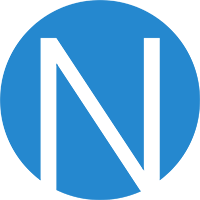Zapier's 100x LLM opportunity
 Jan-Erik Asplund
Jan-Erik Asplund
TL;DR: Zapier’s ChatGPT plugin gives LLMs the key thing they’ve been missing: the ability to manipulate external software. But Zapier’s mission now is to harness LLMs themselves to reinvent the concept of a ‘zap’ and commoditize OpenAI—for more, check out our interview with Mike Knoop, co-founder and CPO at Zapier.

- In 2015, Magic found extreme product-market fit (and a Sequoia Series A term sheet) with 17,000 requests in 48 hours for its text-based assistant that could get you anything—but it failed to scale because it was completely human-powered behind the scenes. Magic and similar products like Fin (started by Venmo founder Andrew Kortina and ex-VP of Product at Facebook Sam Lessin) pivoted into becoming workforce automation and analytics platforms for large human teams. (link)
- That pattern of product-market fit for an on-demand intelligent assistant re-emerged with ChatGPT, backed by AI tech that could scale to 100M+ users and beyond. Compare the $5/hr/person unit cost of overseas labor delivered via a chat interface vs less than $20/month for near-unlimited use of a large language model (LLM). (link)

- With ChatGPT Plugins—OpenAI’s newly-launched 3rd-party app store for ChatGPT—now your intelligent assistant can take action for you inside of the apps you use, most notably via launch partner Zapier and its 5,000+ app ecosystem. Type “Can you find my last email from Jeff?” in ChatGPT and your assistant will use your Zapier plugin, powered by its Natural Language Actions (NLA) API, to pull the latest email from Gmail and display it in chat. (link)
- The ChatGPT and OpenAI apps are Zapier’s fastest growing integrations of all time, showing AI’s boon to automation workflows. As an incumbent integrating AI, Zapier benefits from being able to easily plug OpenAI’s natural language capabilities into its existing zap paradigm, giving it time to figure out how to use AI’s emerging reasoning capabilities to re-invent automation. (link)
- In the near-term, OpenAI and Zapier are drafting off of each other, working together to pull away from the pack—in the long-term, they’re competing to own the productivity interface where people get stuff done. The downside case, where you don’t get unique ownership of an interface, is that you get aggregated and turned into 1 of N apps that does a commodity task. (link)
- While building its own native chat experience, Zapier is also facilitating competition with ChatGPT across all chat destinations—Slack, Discord, Bing and others—by giving AI superpowers to any chat, AI-powered or not, just through integrating the Zapier NLA API which comes with an LLM inside. And just as Google strategically invested in Android as an open source alternative to iOS, Zapier supporting and offering user choice of LLMs will stave off a future where one company dominates the technology and the interface. (link)

- Zapier sits at a massive inflection point with a 10x-100x opportunity in front of it by evolving from a trigger-and-action based prosumer workflow tool to an AI-powered virtual assistant that anyone can use. Already a search destination with millions of visitors monthly via its dominance of programmatic SEO and editorial productivity content, Zapier has the potential to integrate AI end-to-end in the user experience to make automation more accessible and dramatically increase its total addressable market (TAM). (link)
For more, check out our interview with Mike Knoop, co-founder and CPO at Zapier, as well as this other research from our platform:
- Edo Liberty, founder and CEO of Pinecone, on the companies indexed on OpenAI
- Zapier: The $7B Netflix of Productivity
- Airtable: The $7.7B Roblox of the Enterprise
- Oscar Beijbom. co-founder and CTO of Nyckel, on the opportunites in the AI/ML tooling market
- Jeff Tang, CEO of Athens Research, on Pinecone and the AI stack














